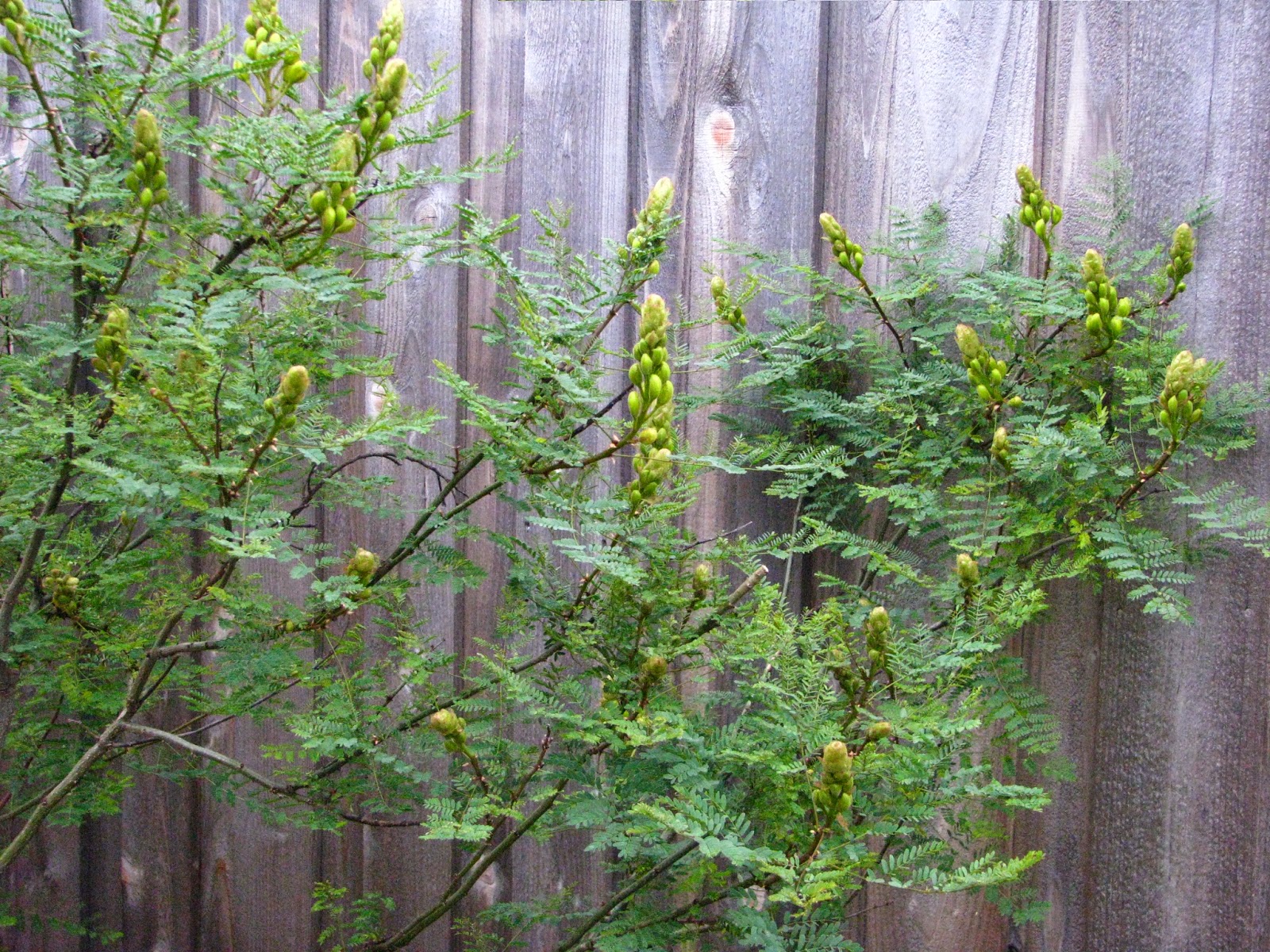It has rained a lot this spring. Almost every day. The soil is saturated. Most area lakes are full again and many are even flowing over their spillways. Flooding is a problem in some areas. We have had more rain in the first five months of this year as we had in all of last year. Plano even relaxed its outdoor watering restrictions and we can now run sprinklers twice a week! And, believe it or not, people are running their sprinklers!
All of this water (Rain only. No outdoor watering around here.) has caused plants to grow like crazy. Since there has not been much sun, the growth is rather weak and floppy.

This pathway in the backyard is barely navigable because the plants have grown into it and there has not been enough dry weather to do any pruning.
Around in the front yard, the horsetail reed in the stock tank is over six feet high.

I have been a little worried that the plants that prefer good drainage and drier soil would suffer in the waterlogged black clay, but, so far, it looks like everything seems to be doing OK.

In the seven years the rain garden has been in place, it has never seen so much rain.

Water stands in it for hours at a time after a rain, but never long enough to allow mosquitoes to breed. Since I have not been able to do much gardening outside because of the rain, I started water gardening indoors.

Long before I had a gardening obsession, I had an obsession with fish and aquariums. It started back in elementary school with a fish bowl and a couple of guppies and I thought it ended about 15 years ago when I sold my 75 gallon saltwater reef aquarium.
That was until I started looking at used aquariums on craigslist last fall. I thought I would just get a small tank and a few fish. I ended up buying seven aquariums since then. Once I started looking, it was hard to pass up a good deal. I never had all of those aquariums set up at one time. Three was the most. Now I am down to two set up and two left to sell. All of these photos are of my 45 gallon aquarium (36x12x24 inches).

I started out with plastic plants and bought a couple of live aquatic plants to see if I could grow them. I was not expecting them to live since I never had much luck with live plants in my younger days, but, to my surprise, the plants lived and grew. So I started acquiring more plants and most of them grew too. Now the plastic plants are gone and I only have live plants.

Through my online research, I learned the pros and cons of the many techniques for growing aquatic plants. Just like gardening outdoors, everybody has their own way of doing things.

In March, I tore down this tank and set it up again using a mixture of garden soil and Safe-T-Sorb (a fired clay used as an oil absorbent in garages) topped with a layer of small grained gravel for the aquarium substrate. When I first heard of this technique, I could not imagine how you could have anything other than a muddy mess, but the water is actually clearer than it was with just gravel in the bottom and the plants seem to love it.

Some aquarists push their plant growth by injecting carbon dioxide into the aquarium water. My plants are growing well enough, so I don't plan on going that route. I want to keep it as simple as possible. I do add some chemical fertilizers to the water to feed the plants. Being an organic gardener outside, I am not thrilled with adding chemicals to a tank of water the that sits in my living room and often has my arm inserted. Now that I know I can grow plants, I am experimenting with lower levels of fertilizers and researching possible organic alternatives.

It is not all about the plants. I do have some fish in the aquarium. Mostly catfish and angelfish.

This is my largest angelfish. It has an interesting blue tint where the others are silver.

This is a panorama of the above photos that Google automatically created. I think the overall effect looks pretty nice, but it is amateurish. People with a lot more time on their hands than I have compete in aquascape contests. The results are often amazing. They create underwater landscapes that look like terrestrial landscapes, even desert scenes. Click the link for a few photos and more information. In the meantime, I will continue water gardening indoors until I can water-wise garden outdoors or I have to start water gardening outdoors because the rain does not let up.







































